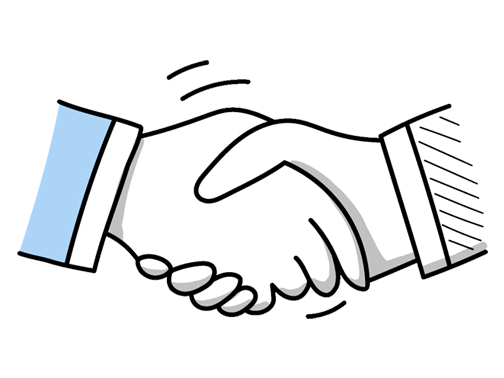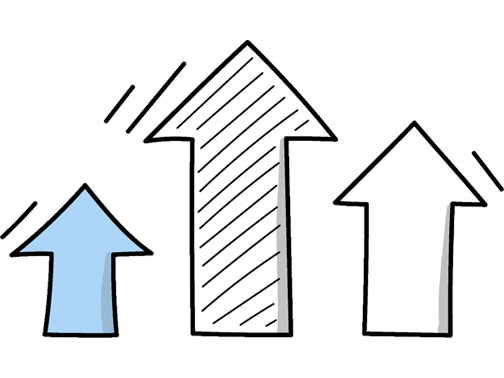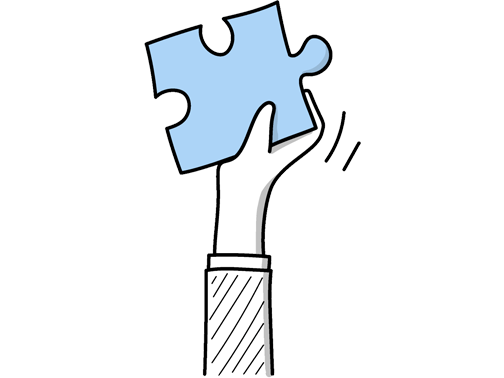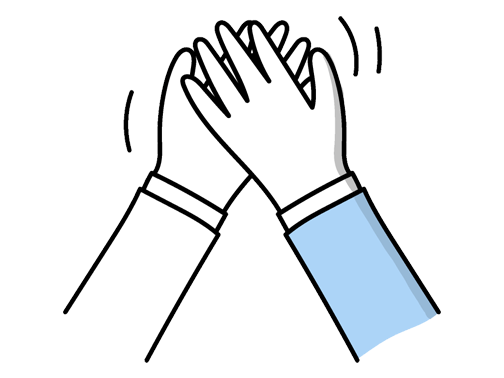Electrical Engineer Interview Questions (2025 Guide)
Find out common Electrical Engineer questions, how to answer, and tips for your next job interview
Practice Interviews Online - Identify your strengths and weakness in a realistic Electrical Engineer mock interview, under 10 minutes
Practice Now »Electrical Engineer Interview Questions
Employers ask this to assess your understanding of fundamental electrical concepts crucial for engineering tasks. You need to explain that a transformer works on electromagnetic induction, transferring electrical energy between circuits through changing magnetic fields without direct connection.
Example: A transformer works on the principle of electromagnetic induction, transferring electrical energy between two coils without direct connection. When alternating current flows through the primary coil, it creates a changing magnetic field, which induces a voltage in the secondary coil. This allows us to step voltage up or down efficiently—like how power lines reduce high transmission voltages to safer levels for homes. It’s a simple yet vital device in electrical systems.
This question assesses your problem-solving skills and systematic thinking when faced with technical issues. You need to explain that you first gather information, isolate the problem by testing components step-by-step, and use logical troubleshooting to find the root cause efficiently.
Example: When diagnosing faulty equipment, I start by gathering as much information as possible—checking symptoms, history, and any error codes. Then, I methodically test components, often starting with the most common failure points. For example, once I traced a motor fault to a simple wiring issue overlooked initially. Staying systematic and patient usually helps me pinpoint the problem efficiently without unnecessary downtime.
This question assesses your understanding of how efficiently electrical power is used in a system. You need to explain that power factor measures the ratio of real power to apparent power, and highlight its importance in improving energy efficiency and reducing losses.
Example: Power factor measures how effectively electrical power is used, comparing real power to apparent power in a system. A low power factor means more current is needed for the same amount of useful work, which can cause energy loss and higher costs. Improving it, say by adding capacitors, helps reduce wasted energy and keeps equipment running efficiently, which is especially important in both industrial settings and everyday applications.
What they want to know is how you keep the team connected and informed to achieve project goals smoothly. You need to say that you actively listen by asking clarifying questions, summarize key points to ensure understanding, and encourage everyone, especially quieter members, to share their ideas openly.
Example: I make it a point to really listen to what everyone’s saying to understand their viewpoints. I also try to communicate clearly and keep things straightforward to avoid confusion. Encouraging a relaxed environment where people feel comfortable sharing ideas usually helps the team come up with better solutions. For example, in a recent project, this approach helped us catch a potential design flaw early on.
This interview question is designed to assess your communication skills and ability to convey complex technical information clearly to non-experts. In your answer, briefly describe the situation, how you prepared your presentation, and emphasize your efforts to make the information accessible and engaging for the large audience.
Example: Certainly. During a recent project, I analysed the electrical load distribution for a new facility and presented the results to a group of around 50 colleagues, including engineers and management. I focused on clear visuals and practical implications to keep everyone engaged. It was rewarding to see the team understand the data and use it to make informed decisions about resource allocation.
What they want to know is how you maintain effective teamwork and project focus to achieve goals efficiently. You need to say you communicate clearly and regularly, clarify roles and responsibilities, and encourage open dialogue to keep everyone aligned and resolve conflicts.
Example: To keep everyone on the same page, I make it a point to have open and consistent conversations about what we’re aiming to achieve. I encourage questions to make sure there’s clarity from the start. When challenges arise, I step in early to mediate and keep things moving smoothly. In a past project, this approach helped the team meet tight deadlines without confusion or friction.
This interview question assesses your ability to communicate technical information effectively, which is crucial in electrical engineering to avoid misunderstandings. In your answer, explain that you focus on organizing key points logically and use straightforward language to make complex ideas accessible.
Example: I focus on organizing my thoughts logically and using plain language to make complex ideas easy to follow. Before finalizing, I review the report to cut unnecessary details and improve clarity. I also ask colleagues for feedback to ensure the content is straightforward. For example, when explaining circuit designs, I use simple diagrams alongside brief explanations to keep the reader engaged without overwhelming them.
What they want to understand is how you organize and manage engineering projects efficiently using technology. You need to mention specific tools like MS Project, Trello, or Asana, and explain how you use them to schedule tasks, track progress, and communicate with your team.
Example: I usually work with tools like Microsoft Project and Trello to map out timelines and track milestones clearly. For documentation and team communication, platforms like SharePoint or Teams help keep everyone aligned. Using these tools, I can efficiently coordinate tasks and update stakeholders, making sure projects stay on schedule and collaboration runs smoothly throughout. For example, in my last project, regular updates via Teams helped us quickly address issues without delays.
This question helps the interviewer assess your awareness of critical safety practices and your ability to implement them in real-world projects. You need to explain how you identified relevant UK electrical safety regulations, describe the safety protocols you used, and highlight the positive results of following those standards.
Example: In a recent project designing electrical systems for a healthcare facility, I began by thoroughly reviewing the relevant UK wiring regulations and hospital safety codes. I worked closely with the team to implement clear protocols, conducted regular checks, and ensured every component met the strict standards. This approach not only guaranteed compliance but also contributed to a safe, reliable environment critical for patient care.
Hiring managers ask this question to see if you understand the practical and safety aspects of electrical design. You need to explain that you calculate the current based on load power and voltage, consider voltage drop, select cable type and size based on insulation and installation conditions, and reference standards like BS 7671 for compliance.
Example: To size a cable, I start by calculating the expected current based on the load. Then, I consider factors like voltage drop to ensure efficiency over the cable length. It’s important to choose the right cable type and insulation suited to the installation environment, whether it’s underground or in a cable tray. Throughout, I follow UK wiring regulations and standards like BS 7671 to maintain safety and compliance.
Interviewers ask this question to assess your teamwork, communication, and problem-solving skills in a real project context. In your answer, clearly describe your specific role and contributions, explain how the team worked together effectively, and highlight the successful results and impact of the project.
Example: In a recent project designing a renewable energy system, I worked closely with a multidisciplinary team, focusing on electrical circuit design and testing. We held regular meetings to align our progress and quickly address any challenges. Our open communication helped us complete the project ahead of schedule, resulting in a reliable, efficient system that reduced energy costs by 15% for the client. It was rewarding to see how teamwork made a tangible impact.
This interview question assesses your foundational knowledge of electrical protection devices and their practical applications. You need to clearly explain the main types of circuit breakers—MCB, MCCB, RCCB, and ELCB—and describe where each is typically used and how they enhance safety, such as how RCCBs protect against earth faults.
Example: Circuit breakers come in several types, like miniature circuit breakers (MCBs) for residential use, moulded case circuit breakers (MCCBs) for industrial settings, and air or vacuum circuit breakers used in high-voltage applications. Each protects against overcurrent and short circuits, ensuring safety by interrupting faulty currents. For example, MCBs prevent household fires, while MCCBs safeguard heavy machinery, highlighting their crucial role in protecting people and equipment alike.
Employers ask this to see how you adapt and problem-solve under pressure, which is crucial in engineering projects. You need to say that you stay calm, assess the issue carefully, and quickly develop a practical solution while communicating effectively with your team.
Example: When unexpected challenges arise, I stay calm and assess the situation to understand the root cause. For example, during a recent project, a key component was delayed, so I quickly coordinated with suppliers and adjusted the schedule to keep progress on track. I find that staying flexible and communicating clearly with the team helps solve problems efficiently without compromising quality.
This interview question helps assess your interpersonal and problem-solving skills in a team setting. You need to explain how you listen carefully to understand different viewpoints, communicate calmly to find common ground, and use collaborative problem-solving to resolve the conflict.
Example: When conflicts arise, I make sure to listen carefully to everyone involved, so I truly understand their viewpoints. I stay calm and open, encouraging respectful dialogue to find where we agree. Then, I focus on practical solutions that benefit the whole team. In a previous project, this approach helped us quickly resolve a design disagreement and keep the project on track without any hard feelings.
This interview question assesses your ability to communicate clearly and make technical information accessible to those without a technical background. You need to say that you simplify concepts using analogies, avoid jargon, and tailor your explanation to the audience’s level of understanding.
Example: When explaining technical ideas to non-technical people, I focus on using clear, everyday language and relatable analogies. For example, comparing electrical circuits to water flow helps bridge understanding. I also encourage questions to ensure clarity and adapt my explanations based on the audience’s background. This approach keeps communication effective and builds trust, making complex ideas more accessible without overwhelming them.
Questions like this assess your ability to manage a project comprehensively, demonstrating your planning, execution, and problem-solving skills. You need to clearly outline the project's goal, your specific role, the steps you took, and the outcome to show your technical and organizational competence.
Example: Sure. In a recent role, I led the design and installation of a renewable energy system for a community centre. From initial site surveys to selecting components and overseeing the installation, I ensured everything met safety and efficiency standards. Collaborating with contractors and clients helped me adapt plans smoothly. Seeing the system operational, reducing energy costs, was especially rewarding. It was a great example of turning technical plans into real-world benefits.
Hiring managers ask this to see if you actively contribute and adapt within a team. You should say you take initiative to propose solutions, flexibly assume different roles, and communicate effectively by listening and resolving conflicts.
Example: In a team, I’m usually the one who listens carefully, shares ideas openly, and steps up where needed. For example, on a recent project, I shifted between leading design discussions and helping troubleshoot issues based on the team’s needs. I find staying flexible helps us move forward smoothly and keeps everyone engaged. Clear communication and addressing concerns early make a big difference in keeping the team on track.
Questions like this assess your problem-solving skills and ability to handle complexity in real-world engineering tasks. You need to clearly describe the specific technical challenges you faced, explain how you addressed them with your approach, and share the positive results or lessons learned from the project.
Example: One of the toughest projects I worked on involved upgrading an outdated electrical system in a busy commercial building without disrupting daily operations. Coordinating closely with the team, we implemented phased installations and real-time monitoring to manage risks. This approach not only ensured safety but also met tight deadlines. It taught me the value of proactive planning and clear communication in complex environments.
Hiring managers ask this question to see how you approach complex problems and apply creativity in engineering solutions. You need to describe a specific challenge you faced, explain the innovative method you used to solve it, and highlight the positive results your solution achieved.
Example: In a previous role, we faced frequent power fluctuations affecting sensitive equipment. Instead of standard fixes, I designed a customised filtering system using readily available components, which wasn’t typical for our setups. This approach stabilised the supply, reduced downtime significantly, and saved costs on expensive replacements. It showed me how thinking beyond usual protocols can lead to practical, effective solutions.
This interview question assesses your ability to accept and grow from feedback, which is crucial for clear, effective communication in engineering teams. You need to say that you welcome constructive criticism calmly and give an example of how you adjusted your communication style to improve collaboration with varied audiences.
Example: I see feedback as a valuable tool to improve how I share ideas, especially when working with colleagues from different backgrounds. For example, early in my career, a mentor pointed out I was too technical in meetings. I started tailoring my language to make complex concepts clearer, which really helped the team’s understanding and collaboration. I believe adjusting communication based on feedback not only builds stronger relationships but also leads to better project outcomes.
Questions like this assess your problem-solving skills and your ability to methodically diagnose and resolve technical challenges. You need to explain how you identified the root cause with diagnostic tools, followed a logical troubleshooting process, and communicated your findings to the team to fix the issue.
Example: In a previous role, I encountered a persistent fault in a building’s electrical system. I started by isolating different sections to narrow down the source, then reviewed schematics and tested components methodically. Throughout the process, I kept the team updated and sought input from colleagues when needed. This collaborative approach helped us quickly identify a faulty relay, which once replaced, restored normal operation.
Employers ask this to see how you actively improve a vital skill that ensures clear collaboration and project success. You should say you attend workshops, tailor your communication to different audiences, and take opportunities to practice by leading meetings or presentations.
Example: I focus on listening carefully and adapting my message depending on who I’m speaking with, whether it’s colleagues or clients. I also seek feedback to understand how I can improve. Practicing through presentations or team meetings helps me stay confident and clear. For example, explaining complex technical details in simple terms during project updates has been a valuable way to sharpen my communication.
This interview question assesses your ability to manage time, meet deadlines, and handle competing demands effectively. You need to explain that you evaluate task urgency and impact, create a clear schedule, and communicate priorities to ensure timely project completion.
Example: When juggling several projects, I start by assessing deadlines and the impact each task has on the overall goals. I break work into manageable steps and stay flexible to adjust priorities as needed. For example, if a critical system needs urgent troubleshooting, I’ll focus there first, while smaller tasks move down the list. Clear communication with the team also helps keep everything on track without unnecessary stress.
This question aims to assess your commitment to precision and quality in your engineering work. You need to say that you use systematic testing like detailed simulations, follow relevant standards such as UK electrical codes, and apply analytical tools for continuous monitoring to ensure accuracy and reliability.
Example: To ensure accuracy and reliability, I follow a thorough process of testing and cross-checking designs against established industry standards. I rely on analytical tools to catch any inconsistencies early and regularly monitor system performance once implemented. For example, while working on a recent panel design, I used simulation software to validate fault tolerance before physical tests confirmed everything met safety and efficiency requirements.
Questions like this test your fundamental understanding of motor types and their applications. You need to explain that synchronous motors run at a constant speed synchronized with the supply frequency, while asynchronous motors (induction motors) run at a speed slightly less than the supply frequency due to slip.
Example: A synchronous motor runs at a constant speed, matching the supply frequency exactly, which is ideal for applications needing precise speed control like clocks or conveyors. In contrast, an asynchronous motor’s speed varies slightly with load, thanks to induction, making it reliable and simpler for everyday tasks like fans or pumps. So, while both have their uses, the key difference lies in how their speed relates to the power supply.
Ace your next Electrical Engineer interview with even more questions and answers
Common Interview Questions To Expect
The interviewer is looking for you to highlight your key skills, abilities, and qualities that make you a strong candidate for the position. Be sure to provide specific examples to support your strengths.
Example: I would say my biggest strengths are my problem-solving skills, attention to detail, and ability to work well under pressure. For example, in my previous role, I was able to troubleshoot complex electrical issues and come up with innovative solutions to ensure projects were completed on time. I believe these strengths would make me a valuable asset to your team.
The interviewer is looking for examples of problem-solving skills, conflict resolution abilities, and how you handle challenges in the workplace. Answers should demonstrate your ability to overcome obstacles and work effectively in a team.
Example: Sure! One challenge I faced at work was when we had a tight deadline to complete a project, but there were disagreements within the team on the best approach. I suggested we have a team meeting to discuss everyone's ideas and come up with a compromise that satisfied everyone. By listening to everyone's perspectives and finding common ground, we were able to successfully complete the project on time.
The interviewer is looking for a candidate who has done their research on the company, understands its values, products/services, and overall mission. Answers should demonstrate knowledge and interest in the company.
Example: I know that your company is a leading provider of renewable energy solutions in the UK. I've read about your innovative projects in solar and wind power, and I'm excited about the opportunity to contribute my skills as an electrical engineer to help further your mission of sustainability. I believe my background in electrical engineering aligns well with your company's focus on clean energy solutions.
The interviewer is looking for honesty, professionalism, and a valid reason for leaving the previous job. Possible answers could include seeking career growth, better opportunities, or a change in industry.
Example: I left my last job because I felt like I had reached a plateau in terms of career growth and wanted to explore new opportunities in the electrical engineering field. I was looking for a chance to work on more challenging projects and expand my skill set. It was a personal decision to seek out a new environment that would allow me to continue growing professionally.
The interviewer is looking for insight into your personal drive and passion for the field. Answers can include personal goals, desire for growth, passion for problem-solving, or commitment to making a difference.
Example: What motivates me as an electrical engineer is the opportunity to constantly learn and grow in a field that is always evolving. I am passionate about problem-solving and finding innovative solutions to complex challenges. Ultimately, my goal is to make a positive impact through my work in the electrical engineering industry.
Company Research Tips
The company's official website is a goldmine of information. Look for details about the company's history, mission, vision, and values. Pay special attention to their products, services, and client base. For an Electrical Engineer role, focus on the company's projects related to electrical engineering, their technologies, and methodologies. This will give you a clear understanding of what they do and how they do it.
Tip: Don't just skim through the website. Take notes and try to understand the company's culture, work ethics, and business model. Look for any recent news or press releases related to the company.
LinkedIn can provide valuable insights about the company and its employees. Look at the company's LinkedIn page to understand its size, industry, and employee demographics. You can also find information about the company's culture and values. Check the profiles of current and former employees, especially those in the Electrical Engineering department. This can give you an idea of the skills and experience the company values.
Tip: Use LinkedIn's advanced search features to find employees in similar roles and see their career paths. This can give you an idea of the skills and qualifications the company values.
Glassdoor is a platform where current and former employees anonymously review companies. You can find information about the company's culture, salary, benefits, and interview process. For an Electrical Engineer role, look for reviews from people in similar roles to get an idea of what the interview process is like and what questions you might be asked.
Tip: Take the reviews with a grain of salt. People are more likely to leave reviews if they had a negative experience. However, if you see a pattern of similar complaints, it might be a red flag.
Understanding the industry the company operates in can give you a competitive edge. Look for industry trends, challenges, and opportunities. For an Electrical Engineer role, focus on the trends and challenges in the electrical engineering industry. This can help you understand the company's position in the industry and how you can contribute to its success.
Tip: Use reliable sources for your research like industry reports, trade publications, and professional associations. Try to understand how the company is responding to industry trends and challenges.
What to wear to an Electrical Engineer interview
- Dark-colored business suit
- White or light-colored dress shirt
- Conservative tie
- Polished dress shoes
- Minimal and professional accessories
- Neat and clean grooming
- Avoid flashy jewelry
- Carry a professional bag or briefcase
- Wear a belt that matches your shoes
- Ensure clothes are ironed and fit well





